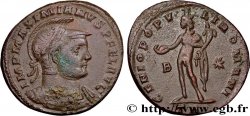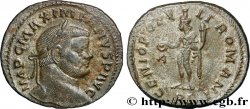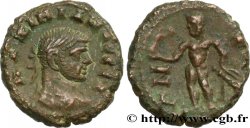brm_508003 - MAXIMIANUS HERCULIUS Follis ou nummus
Not available.
Item sold on our e-shop (2019)
Price : 180.00 €
Item sold on our e-shop (2019)
Price : 180.00 €
Type : Follis ou nummus
Date: 300-302
Mint name / Town : Lyon
Metal : copper
Diameter : 28 mm
Orientation dies : 7 h.
Weight : 9,43 g.
Rarity : R2
Officine: 2e
Coments on the condition:
Exemplaire sur un flan bien centré présentant un beau buste de Maximien Hercule au droit. Traces de circulation plus importantes au revers mais il reste parfaitement lisible. Patine vert foncé et sable
Catalogue references :
Obverse
Obverse legend : IMP MAXIMIANVS P AVG.
Obverse description : Buste lauré et cuirassé de Maximien Hercule à gauche, drapé sur l’épaule, vu de trois quarts en avant avec un sceptre sur l’épaule droite (F*5).
Obverse translation : “Imperator Maximianus Pius Augustus”, (L’empereur Maximien pieux auguste).
Reverse
Reverse legend : GENIO POP-VLI ROMANI/ (AUTEL)|B// PLG.
Reverse description : Genius (Génie) debout à gauche, coiffé du modius, le manteau sur l'épaule gauche, tenant une patère de la main droite et une corne d'abondance de la main gauche.
Reverse translation : “Genio Populi Romani”, (Au Génie du Peuple romain).
Commentary
Rubans de type 3 aux extrémités bouletées. Cuirasse et épaulière cloutées. Ptéryges fines. C’est la deuxième fois que nous proposons ce type à la vente. C’est le neuvième exemplaire recensé. Nous n’avons pas relevé d’identité de coin pertinente. Prendra le numéro 201d dans le Supplément III du Bastien.








 Report a mistake
Report a mistake Print the page
Print the page Share my selection
Share my selection Ask a question
Ask a question Consign / sell
Consign / sell
 Full data
Full data



